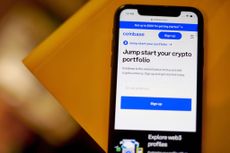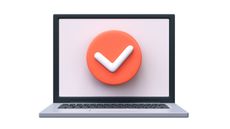Top 6 Apps to Spring Clean Your Finances
To help get a better grip on where your money is going, recommit to a budget or jump-start your savings plan, these handy apps are just a swipe away.


Everyone who's into managing his or her personal finances with the help of an app has heard about Mint, which currently ranks No. 24 among all free apps in the Finance category that can be downloaded from the Apple iOS Store.
To offer you a couple of alternatives, I would like to introduce you to other handy personal finance apps that help you to monitor your expenses and reach your financial goals.
1. Clarity Money, free
The Clarity Money Budget Planner analyzes your personal finances using data science and machine learning with the goal to “help you make smarter decisions with your money.”

Sign up for Kiplinger’s Free E-Newsletters
Profit and prosper with the best of expert advice on investing, taxes, retirement, personal finance and more - straight to your e-mail.
Profit and prosper with the best of expert advice - straight to your e-mail.
The free app allows you to not only plan your budget, but also track all your expenses, cancel recurring charges and subscriptions and find credit card deals that fit your spending habits, so you can hopefully manage to save some money in your bank account in the long run.
As of March 2018, the app has been rated almost 16,000 times in the iOS Store with an average rating of 4+ stars and more than 700 times in the Google Play Store with a rating of 4.2 stars.
Here is what TechCrunch says about Clarity Money:
“It’s the kind of universal financial services tool that combines a number of the best features of existing money-management apps into a one-stop-shop.”
2. You Need A Budget, free trial
You Need A Budget (YNAB) is another personal finance tool that lets you to plan your budget and track expenses.
Unlike Clarity Money, YNAB is not free, but you have the option to sign up for a 34-day trial period. After the trial you will be billed for a one-year subscription ($83.99) if you decide to continue using the app. What's great is that YNAB offers a 100% money-back guarantee with no questions asked at any point.
Key features are:
- Synching all of your bank accounts in a single entity.
- Real-time access and tracking of all your data.
- Access to tools that help you get out of debt.
- Set goals to stay on track.
- Detailed reporting and personal support.
According to the team behind YNAB, new users are able to save $600 on average in the first two months of using the app and as much as $6,000 in their first year.
By the way, You Need A Budget has already been downloaded more than 100,000 times from the Google Play Store with an average user rating of 4.0 stars.
3. Spendee, free
Spendee is a free app that comes with in-app purchases.
It lets you track your expenses (even in foreign currencies, in case you are on vacation), create custom wallets for special events, such as birthday parties or Christmas, and it provides comprehensible graphics that outline your financial odyssey to help you gain the upper hand.
If you decide to upgrade to Spendee Plus ($1.99/month), you can create multiple wallets that you can then share with your family members and friends. This feature comes in handy, if there are expenses that you don't pay for entirely by yourself.
Spendee Premium ($2.99/month) allows you to synch the app with all of your different bank accounts.
Here is what some users have to say about the app:
- “Great product. Love the interface and all the reports.”
- “When it comes to simplicity, usability and UI (user interface). Trust me this is the best one in Play Store.”
- “Awesome to keep my expenses track. Help to reduce the unwanted one.”
- Shep McAllister from lifehacker.com writes that “Spendee Tracks Your Expenses with a Gorgeous, Frictionless Interface.”
4. Home Budget with Synch, $4.99
Home Budget with Synch has already been downloaded by more than 730,000 users, and it comes in really handy if you want to set a budget that you can share with your whole family and synchronize it between multiple devices together with different incomes and expenses.
Each user can manage budgets, log expenses and track purchases within the app, which processes all data to provide you with information about your spending habits utilizing charts and lists with visually appealing graphics.
The downside? Home Budget with Sync is not available for free. It comes at a one-time purchase price of $4.99 in both the Google Play Store and the iOS Store.
5. Dollarbird, free
Dollarbird takes a different approach to budgeting and expense tracking than the four apps listed above. It's a “personal finance calendar” that lets you add, edit and remove your income and expenses from the past and future in a calendar-oriented fashion.
According to TechCrunch, Dollarbird is best suited for anyone who “wants to keep a closer eye on their cash flow.” The obvious advantage here is that you can plan ahead and keep all expenses under control.
There is a premium plan that costs $2.17/month or $25.99/year that allows you to create multiple calendars and share them with up to three other people. For comparison, Home Budget with Synch costs $4.99, which you only have to pay once, and it also has a great built-in sharing feature but does not take the calendar-oriented approach.
6. Mvelopes, free trial
Mvelopes is the last tool that made it onto our list of personal finance apps that help you make sure that you don't spend a single dime more than your monthly budget allows.
After downloading Mvelopes, you have a free 30-day trial period after which you can choose one of the following plans, in case you would like to continue using it:
- Mvelopes Basic — $4/month
- Mvelopes Plus — $19/month, or pay annually and get two months free
- Mvelopes Complete — $59/month, or pay annually and get two months free
After you install the app, add your bank and credit card account details, you can track your purchases within the app.
What's great about Mvelopes is that it's really easy to categorize your expenses, so that at the end of each month or a year, you can tell exactly how much money you spend on clothes, morning coffees, movie tickets, etc.
Mvelopes tries to make saving fun. In addition, eBooks and videos are available within the app at no additional charge. This is one of the reasons why Mvelopes has received such excellent feedback from its users. In fact, the Mvelopes Complete subscription comes with monthly sessions with a personal financial trainer, providing additional accountability and motivation.
For savers taking steps to improve their financial outlooks, congratulations for staying on the track. If you need some extra help, consider experimenting with any of these personal finance apps to see which one’s right for you.
Get Kiplinger Today newsletter — free
Profit and prosper with the best of Kiplinger's advice on investing, taxes, retirement, personal finance and much more. Delivered daily. Enter your email in the box and click Sign Me Up.

Marguerita M. Cheng is the Chief Executive Officer at Blue Ocean Global Wealth. She is a CFP® professional, a Chartered Retirement Planning Counselor℠ and a Retirement Income Certified Professional. She helps educate the public, policymakers and media about the benefits of competent, ethical financial planning.
-
 Coinbase Stock Swings After SEC Drops Lawsuit
Coinbase Stock Swings After SEC Drops LawsuitCoinbase stock is bouncing between positive and negative territory Friday on news the SEC is dismissing its lawsuit against the the crypto exchange.
By Joey Solitro Published
-
 Block Stock Falls After Revenue, Earnings Miss Expectations
Block Stock Falls After Revenue, Earnings Miss ExpectationsBlock stock is down Friday after the payments platform missed expectations for its fourth quarter. Here's what you need to know.
By Joey Solitro Published
-
 Five Wins for Federal Employees in the Social Security Fairness Act
Five Wins for Federal Employees in the Social Security Fairness ActMore money means more opportunities and financial stability for current retirees and future retirees.
By Brian Skrobonja, Chartered Financial Consultant (ChFC®) Published
-
 How Do You Know Your Insurer Can Afford to Pay Your Claims?
How Do You Know Your Insurer Can Afford to Pay Your Claims?Here's how to find out where your insurance company stands financially and whether it has a good track record with customers.
By Karl Susman, CPCU, LUTCF, CIC, CSFP, CFS, CPIA, AAI-M, PLCS Published
-
 Stressed About Doing Your Taxes? Use These Easy Tips to Cope
Stressed About Doing Your Taxes? Use These Easy Tips to CopeIf the thought of filing your taxes puts you on edge, you're not alone — nearly 65% of Americans say they're stressed during tax season. Here's how to cope.
By Cynthia Pruemm, Investment Adviser Representative Published
-
 Three Ways to Get Your Finances in Better Shape
Three Ways to Get Your Finances in Better ShapeWant fitter finances this year and beyond? Start by making full use of all your workplace benefits — from 401(k)s to budgeting apps and wellness programs.
By Craig Rubino Published
-
 Rethinking Income When You Retire: No Paycheck, No Problem
Rethinking Income When You Retire: No Paycheck, No ProblemWhen you retire, you'll need to adjust to the reality of depending on assets instead of a regular paycheck. For that, you'll need a new financial strategy.
By Joel V. Russo, LUTCF Published
-
 How to Support Your Parents Without Derailing Your Finances
How to Support Your Parents Without Derailing Your FinancesPutting your aging parents' financial house in order can give you a clearer picture of where they need support and how to balance that with your own plans.
By Vincent Birardi, CFP®, AIF®, MBA Published
-
 Here's How Estate Planning Can Make Your Retirement Easier
Here's How Estate Planning Can Make Your Retirement EasierThese estate and legacy planning tools and strategies can help lower your taxes, protect your wealth and more, leaving you to relax during your golden years.
By Cliff Ambrose, FRC℠, CAS® Published
-
 Why 'Standard' Digital Background Checks Can Be So Unreliable
Why 'Standard' Digital Background Checks Can Be So UnreliableMissing online data, as well as stringent federal and state privacy rules, make it difficult to discover a prospective employee's or tenant's criminal past.
By H. Dennis Beaver, Esq. Published